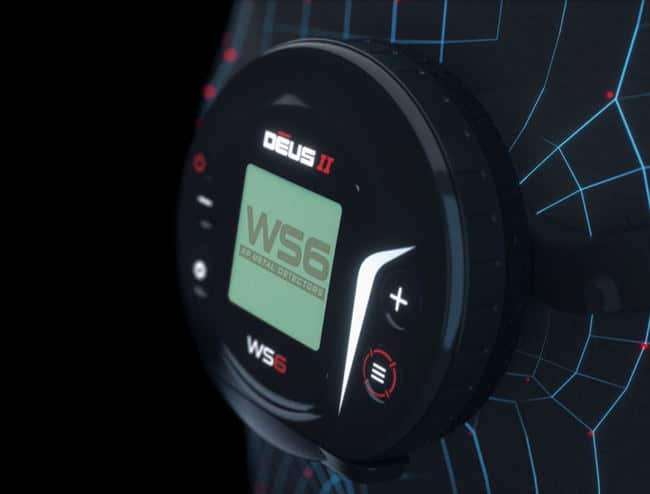
Thanks to our colleague CPT_GhostLight from the PROSPECTORDETECTOR forum, we have a nice table with a list of programs for XP DEUS II:

Thanks to our colleague CPT_GhostLight from the PROSPECTORDETECTOR forum, we have a nice table with a list of programs for XP DEUS II:
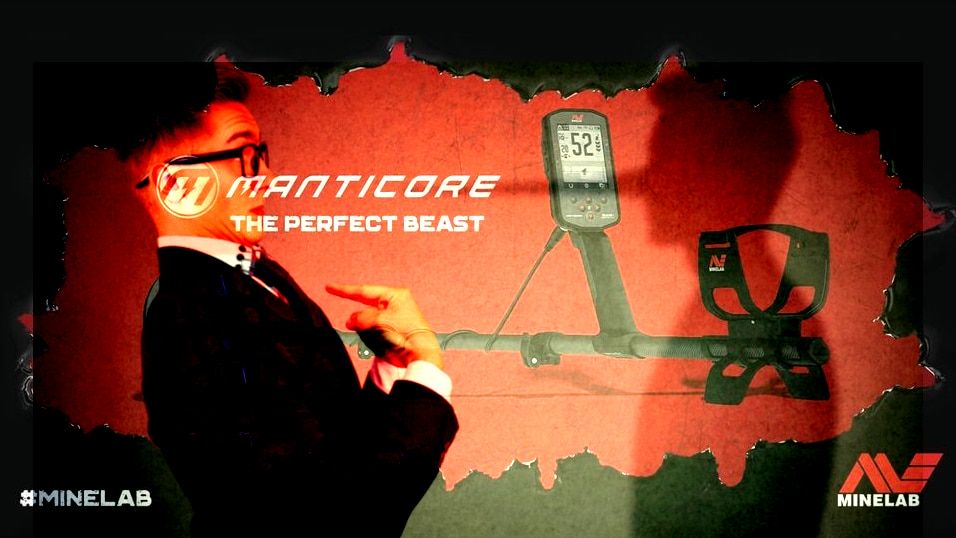
Minelab announced the birth of a new detector called Manticore some time ago. The hype is huge and the expectations are even higher. It is true that the Yankees laugh at the new name, but they raise the bar extremely high, after all, the successor of Equinox or its improved version must live up to expectations.
Well, the price of almost PLN 10,000 is a pure abstraction only for a few and I want to laugh watching on YouTube when storytellers tell how good the device will be. They probably have a hunch… or the cards say so 😉
The truth is that we know absolutely nothing and despite the numerous shows of the Minelab team traveling around Europe, we know even less … After all, the show must go on and that’s what modern marketing is all about. Announcement Announcement?! Why not … that’s what Minelab did and exactly on December 1, 2022, in a moment we will find out about another piece of news … and what!!! How to have fun! The Americans say it’s fun at the customer’s expense. We’ll see.
Everyone is excited about the new 2D system based on Target Trace known from the Minelab CTX3030 model, but this is a completely different matter and the similarity here is purely marketing. Both detectors are different technology and way of managing and displaying an ID. A new opportunity has opened up for a wide identification of iron, which is good, but how it will really work and on what basis it will turn out in the field. The ability to distinguish between large and small iron is a big plus, and the extended scale may also allow better separation of low conductors from high ones. The question is what will happen when there is a pair of them under the probe? How the software will work. Questions and more questions.
Speculation continues. Numerous Equinox experts are already making screenshots for equipment together. I will not be a hypocrite I ordered myself … I’m curious too.
Unfortunately, as in the case of XP DEUSA II, it takes a few months in the field – other tests are just dreams of storytellers who buy equipment one day to sell it the next. Best of all, they don’t put any effort into learning, they assume it’s supposed to be like that, and they borrow the detector for a day or two, so what kind of reliability are we talking about here?!
I watch numerous comparisons in laboratory conditions on the test track … and I want to laugh. People are commenting on a device they don’t know and haven’t spent several hundred hours with! They assume that the borrower has such knowledge and has set it up well, and on this basis, they make an assessment! So they don’t know the detector themselves and they can’t even set it!!! They don’t even know what function it has and how it differs from others!!! So what kind of tests and credibility or reliability are we talking about?!
In a simple way, they implement untruths, for those less grasped they have a story about numerous data in Excel tables. Spells mary grandma’s wife see you soon. It’s in its purest form treating the recipient like a moron, nothing more.
There is also a lot of repetition, I am a master, I understand this equipment, etc., I mastered it to perfection, it is to confirm the leader himself in his perfection and it is in vain to look for field tests or demonstrations and explanations of individual functions and settings. Goebbels himself said that a lie repeated many times becomes the truth. And so it is in this case.
It is a waste of time to produce fairy tales and tell nonsense that others swallow like pelicans. You have to redo it yourself to understand it, put in time and money and an infinite amount of work. Time is priceless nowadays. All the rest is an addition, on which various more or less autistic megalomania and mythomania prey… or maybe it’s Asperger transmitted by droplets? I do not know.
Below is a video that will illuminate you a bit more, still hot!


Has become. Minelab announced new models… Equinox 700 and 900. That’s how they did it… they refreshed the line. So what do we get and how is the new model different?!
A flashlight has arrived, vibrations, a wider ID scale, improved ergonomics, a scale for iron from -1 to 0, and for higher conductors from 1 to 99. They went crazy.
Looking soberly, the changes are cosmetic beyond the scale, but how about the price, in our country, it is the dominant factor. Let’s see what the difference is … GBP 799 for the 700 version and GBP 1099 for the 900 version. This means at the current exchange rate of PLN 4354 and PLN 5989 net …
To sum up, PLN 5,356 and PLN 7,367. Is it supposed to be an alternative to the almost PLN 10,000 Manticore and a response to the fans of the brand who said that someone exaggerated the price? This is how the mouth closes efficiently. Pure marketing. You can not afford it?! Buy yourself a cheaper one… see what we have prepared for you. A slight facelift and refreshed device can be yours.
How does the price compare to the competition? The answer is simple. Miserably. It’s cheaper than Manticore but still expensive. Adding a few goodies won’t make us justify 20% more. There is no chance, although the manufacturer was based on this assumption.
Maybe it’s a matter of prejudice, but Equinox has never convinced me and many of my colleagues feel the same way. After a year of use, I got rid of the device without much regret. It is possible that it was a mistake, but compared to the old XP DEUS model, Whites Spectra or decent DeepTech analogs, I did not see any greater depth, better identification, or stable work.
It is possible that the new models are much better, but I see no reason to be interested in them. Whether this is a mistake time will tell.
Coming back to the prices, well, we live in such no other conditions and only a few can afford expensive devices above PLN 2,500. It is worth remembering and reminding each time because it is not the individual who indicates the goal, but the majority.
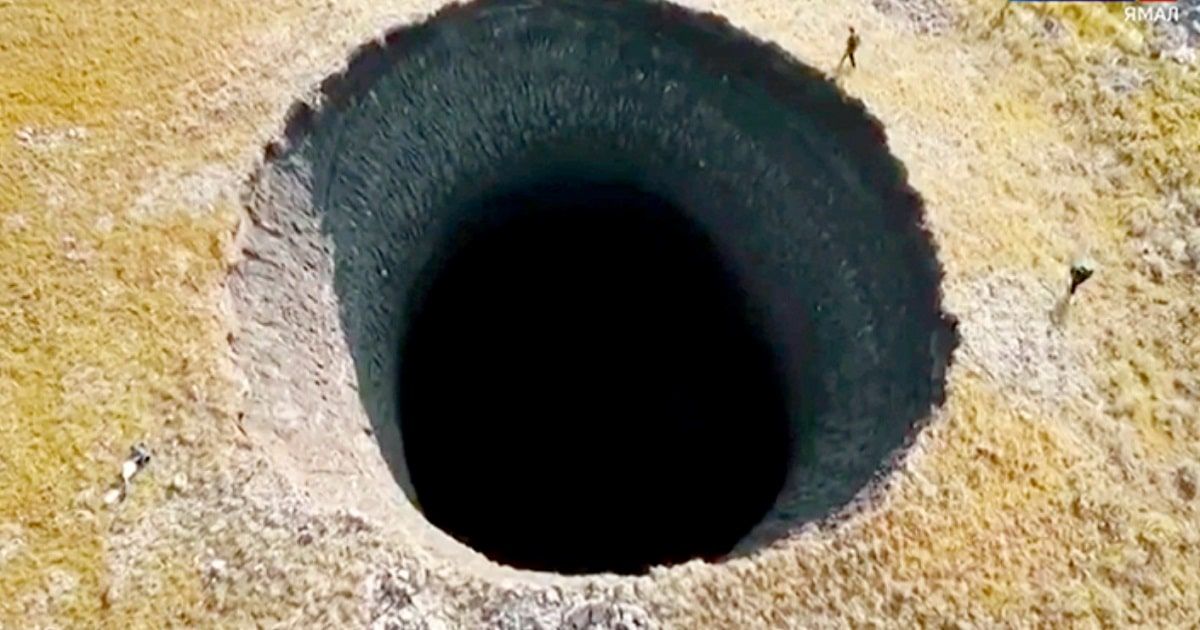
Depth or separation? The eternal question and sleepless nights. I choose to separate objects because this is the most crucial thing in the places where I am able to search. The race for a few inches leads to nothing constructive, but the ability to see in iron does. Scrap heavily masks targets, and it’s not big objects and nails, but also decay dust – its condensed oxides!
The electronics of the detector have to process a lot of signals in a moment, and if we add other conductors to this, the time to generate a signal is very short. Larger signals effectively cover the response of small objects – higher conductors.
The level of mineralization of the substrate, the sweep angle, the conduct of the probe, and the frequency of work are important. All this has a dramatic effect on the effects. Wrongly selected detector and incorrectly set, and there is no chance for any effects. I have experienced this many times and it was very painful. A change in approach, improved probe guidance, and higher operating frequency, and we begin to hear signals previously unavailable.
So what is my recipe for a lot of iron? It depends on many parameters, but to simplify … a higher separation speed of the so-called recovery speed, higher operating frequency, lower sensitivity to conditions, and lower discrimination. Slower sweep, still parallels to the ground. You can also raise the probe slightly up … so if we are fighting with large disturbances from the ground. It will be shallower this way, but we will hear objects that we had no idea about before.
Finally, you can use a single high-frequency operation, an adaptive refresh rate device (Nexus MP V3), or a hybrid PI/VLF detector (Tarsacci MDT), but who can afford that?!
You can find more on this BLOG and on YouTube and social media on Facebook. Speak soon. Comment under the article.
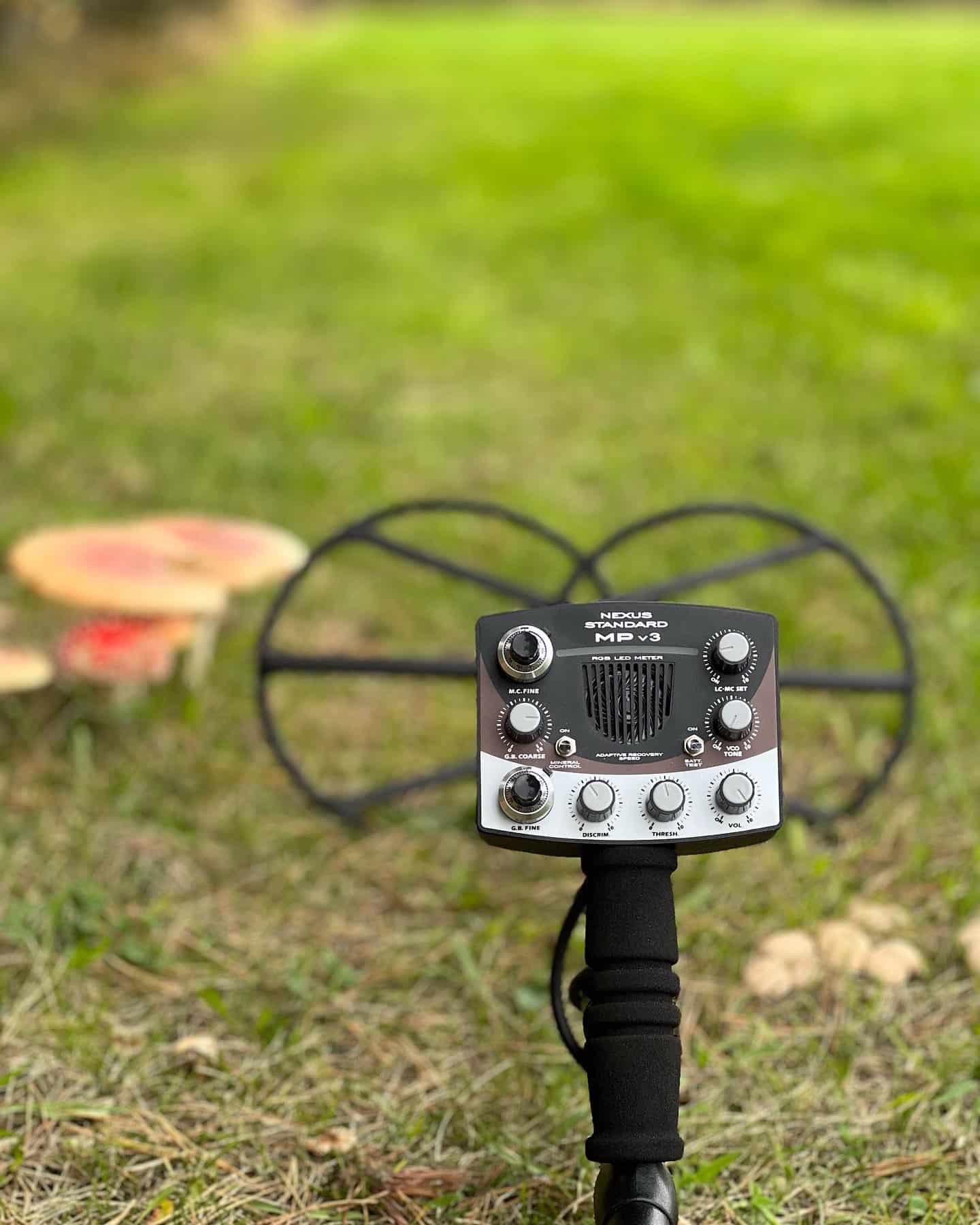
Nexus MPv3 is a detector so different from currently presented detectors that it is difficult to compare them directly. Expensive, heavy, and difficult to use, but perfectly made. Worth every penny for me, but obviously not for everyone.
Why is it worth spending a fortune? First of all, you need to have a lot of experience, a small ego, a lot of humility, and patience. Success requires hard work, only then it tastes the best.
MPv3 is in a completely different league when it comes to performance. No known hardware comes within a meter of the Nexus. Does this mean that it is the best equipment in the world? No. Perfect for old places, but expensive and requiring full understanding.
In addition to the depth of detection, we get beautiful analog audio and a guide signal closely related to the ground calibration, giving a full description of what is happening under the probe. Pure analog power packed into ten…yes ten AA batteries.
Nexus opens old spots and helps close new ones to the end. The whole thing makes a hell of a good tool. Modulated VCO-type audio, depending on the settings, allows you to favor particular conductors. The VCO LED indicator works in a similar way. It’s also adjustable. We have a pair of colors for each guide from green, to orange, blue, and white. It’s a big simplification.
The combination of all these possibilities results in a devilishly effective device, although demanding, but also quite forgiving of mistakes. Perfect second detector for me.
You will find out more soon. Remember about our social media and YouTube channel.
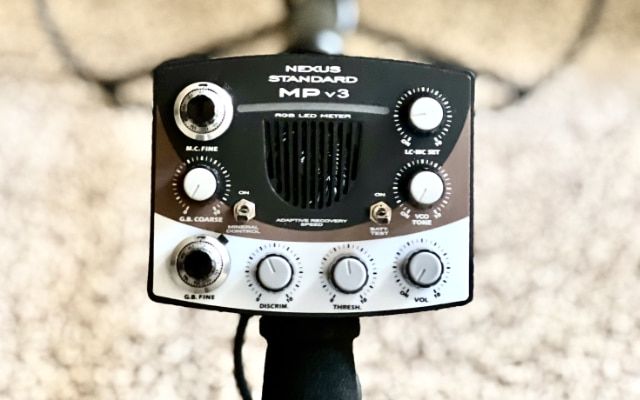
Nexus Standard MPv3 is the next incarnation of the metal detector of the already famous manufacturer. Georgi is a true genius, no doubt about it.
The new detector is not for everyone and not because of its price. It’s all about service and understanding and taking the time. It’s a very difficult device. This is IB (Induction Balance) technology.
The IB metal detector is capable of discriminating between different types of metal objects, such as bottle caps and coins, by distinguishing the amplitude of the corresponding reception signals. In addition, the detector is equipped with a tuning adjustment, which is used to eliminate the influence of ground disturbances with a high content of iron and mineralization.
So in a nutshell and strongly simplified. What does it give? Ability to work in an environment with a lot of iron and mineralization of the substrate!
Unfortunately, this requires a lot of knowledge and awareness from the operator to fully understand the machine. Time and experience plus humility and focus. There is no other way. One mistake in the settings and the whole intricately arranged house of cards collapses.
Nexus Standard MPv3 is a typical knob, where the role of identification is taken over by a multi-color LED display. In addition to additional audio, we have a VCO-type selection knob, discrimination, coarse and fine ground calibration, and mineralization switch … there is a bit of it and it’s not easy to get the hang of it. I am full of optimism and the producer gave me full support. Remember to subscribe. It’s time to face this beast. We’ll see how I do. Courage is added by the fact that the set includes a double probe 2x 10 inches, the so-called low-frequency butterfly, which is supposed to translate into depths unattainable for other devices known to me. We’ll see.
Below is a description of the functions and calibration showing how complicated this device is.
Ground calibration. GB in the MP V3 is divided into two knobs – GB Fine and GB Coarse. The fine adjustment is 10 turns for fine-tuning, and the coarse adjustment is one turn for coarse tuning.
To adjust the ground balance, turn both GB knobs to position 10 clockwise. While moving the probe up and down, rotate the Coarse GB counterclockwise until the detector generates a soft signal as the probe descends.
Then tune with GB Fine by turning it counterclockwise. Continue fine-tuning GB in the final phase only with the help of GB Fine.
You can also do GB in reverse order. Turn both knobs to 0, fully counterclockwise. Then adjust GB Coarse until you get a soft signal as the probe goes up, then adjust GB Fine. The MP V3 Discrimination Control needs to be set somewhere around 3-4 on the scale (similar to the MkII) to avoid iron digging. It is best to select the setting on-site after checking several signals.
Unlike the MkII, the MP V3’s discrimination is very soft and forgiving, meaning there is no danger of clipping too much, everything is done in very small steps.
The LC-MC SET knob is used to turn the RGB LED meter on/off and to adjust the cutoff point between the low (LC) and mid (MC) leads. If this control is set to the left (0), only the lowest conductors will be colored green – hand-minted gold coins, Roman gold coins, any small gold coin or artifact, and very small pieces of foil.
All other non-ferrous objects will be marked with either orange (medium MC conductors) or white/blue (high conductors). If you turn the LC-MC SET to the right, some
hand-minted silver coins will be marked low guides as well as most lugs.
Mineral Control can only be used on highly mineralized soil containing magnetite. MC Fine stands for precise regulation of mineralization. The sensitivity of the detector will be slightly reduced, but this will allow you to reach the audible threshold of objects near strong sources of interference caused by mineralization.
The leading signal the threshold in the MP V3 should be set to the minimum audible level at all times like a constant, stable hum so that the deepest small objects can be detected and all others give a really good sure response.
This setup will ensure that the V3 performs far better than any other detector in existence, even the MP V2 (which is a beast in its own right).
The VCO setting is only intended to be used to identify uncertain, deep objects in the cluttered ground. The VCO should be set so that the first green LED just lights up. This will adjust the VCO tones to an audible level between lows and highs.
VCO is the best way to identify very uncertain (weak signals) targets at maximum depth. When searching in the cluttered ground, the guide signal needs to be quiet so that constant use of the VCO audio is not a nuisance.
If you get your hands on one of the 11.5-inch CC probes, you’ll find that the V3 in VCO mode is unbeatable in iron-strewn areas. No digital detectors can come within a mile of what this V3 detector can do with the right probe, according to the manufacturer. We’ll see!
The general advice is to keep the search coil approximately 10 cm off the ground at all locations and maintain a stable guiding signal. Once the target is located, if uncertain, lower the search coil closer to the ground. If the LED meter shows nothing, use the audio VCO to check the target.
Iron will not be indicated on the RGB LED meter unless the discrimination control is set to a value close to 0. In this case, iron will be indicated green as all other low conductors.
The battery test will show levels from 10.5V to 11.5V. So, when the battery test shows less than a full green LED bar, it means the batteries are nearing full discharge.

What is EMI Interference? The definition is quite broad and a bit confusing for non-technical people:
Electromagnetic Interference (EMI) is any signal or radiated into space or transmitted through power or signal lines that threaten the operation of radio navigation or other safety services, or seriously degrades, blocks, or repeatedly interrupts licensed radio communications. Radio communication services include, but are not limited to, television and radio broadcasting, mobile telephony services, radar scanning, air traffic control, paging services (pagers), and PCS (Personal Communication Services). Licensed radio services, such as those used in WLAN networks or Bluetooth technology, together with incidental transmitters, such as digital devices including computer systems, contribute to the electromagnetic environment.
In our case, these are simply interferences that make the work of the metal detector difficult or even impossible. Half the trouble is when the process is visible and the device characteristically excites, generating a target signal and a numerical ID. Then we know that we are dealing with them and can take appropriate measures. What? Detuning the so-called changing the channel, reducing the sensitivity, or choosing a different operating frequency, if possible, direct elimination of interference sources such as telephones, transmitters, electric fences for animals, etc.
In difficult cases, you can use discrimination and cut-out interference, but this is only a half-measure. We lose performance, which is already heavily limited by EMI interference. A colleague who accompanies us can effectively deprive us of the chance to find finds, being even several meters away with his detector! Don’t fall for the group search, it’s just a nice time at the rally, you can’t count on the effects in such conditions. It’s unlikely!
What was the better situation, and what is the worse? Quiet disturbances. The ones that are not visible, and everything seems to be ok. We lose performance, but the detector does not signal it in any way. You can put a coin under the probe and the device can be completely blind. How to defend against it? It depends on many different factors, and above all on the type of device we have.
We preventively check other programs and detune the device from time to time. We check the signals with the person next to us to see if our detector can handle them as well. It’s the only option. SMF-type machines – simply put, multi-frequency machines, usually work in two or more frequencies, processed by software. In some cases, it may turn out that what was supposed to be a great advantage of a wide frequency range becomes a disadvantage!
For example, we have a program working in the range from 5 to 40 kHz – ideal for searching for gold, i.e. a low conductor is allergic to high frequency, and silver – a high conductor to low frequency. In addition, high frequency copes with small things better and with greater mineralization of the ground. In the case of low frequency, objects with a larger volume are signaled better. Story. We will not miss anything from what interests us the most!
Unfortunately, right now our greatest enemy is approaching and eliminating one of our frequencies. Without seeing it, we lose 50% of the possibilities without knowing it. Often programming and filters sewn in with it additionally stabilize the work of the detector. For this reason, the prevention described above is important. In this way, we will avoid erroneous opinions about the equipment and unreliable tests, especially from the test tracks. Interference can confuse us, so it is worth spending many hours checking different variants of settings in the field in various conditions!
Remember to comment under this article and on our social media.

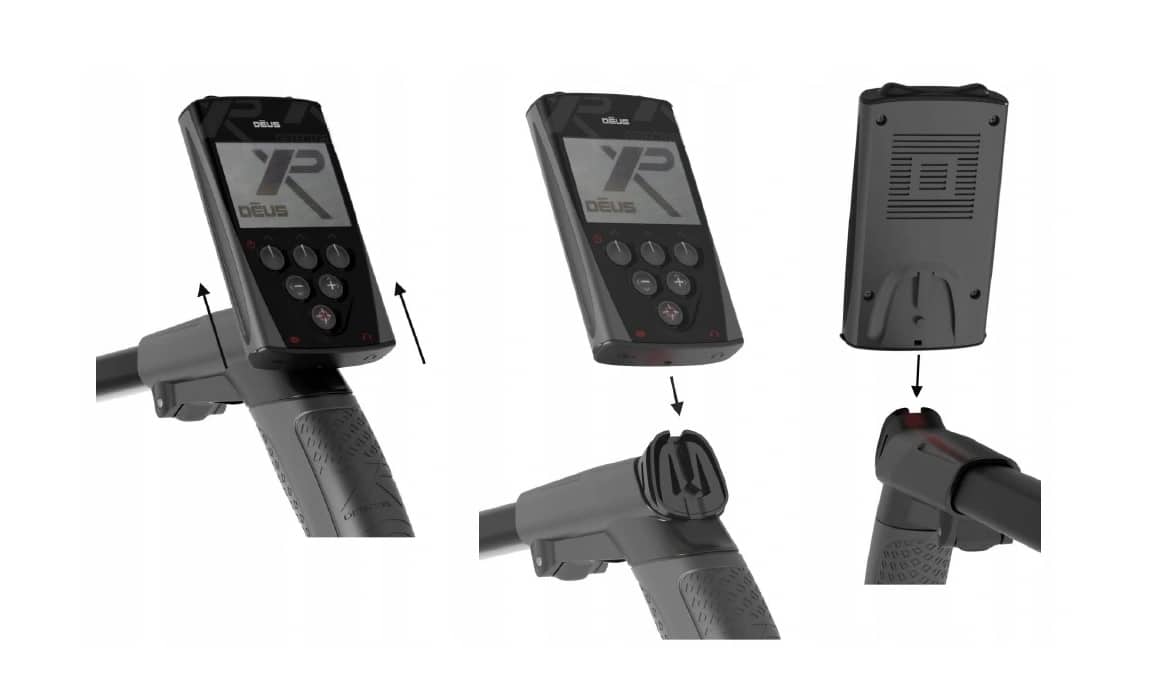
The question is simple with or without a panel? ORX, DEUS, and DEUS II are available in the lite version, where the control electronics are replaced by wireless headphones, also with buttons and a display. So which set to choose? Logically, the best and full, unfortunately, the price difference is significant, and on the other hand, you have to pay more later to buy a panel. It is bad either way. So what decision to make?!
If it is to be the first detector, then we can safely give up this add-on. Why? For a simple reason, we have to go by ear and we don’t have a display with ID numbers or a graph. We learn organoleptically from scratch as it should be – that is, by ear! It only pays off and increases our skills. Such mastery of the equipment gives you a lot and allows you to avoid mistakes at the beginning of the road. The second plus is not wasting time on moving the device when we do not fully understand certain functions and dependencies – less chance for wrong setting and skipping items. Finally, the last thing is weight loss, we can live knowing that our equipment is the lightest in the world!
Are you advanced and want to update? Buy yourself a panel, this solution is for you! There is one more option to work with the equipment, first listening and then verification on the chart. That’s how some programs work, and it works.
We have experience and we understand how the detectors work, then the panel is a chance to squeeze out additional possibilities, change the audio or precisely adjust it to the conditions or your own preferences.

There are days when all the monotony is dazzling. And this time it happened. A narrow strip of land, your own buried holes, footprints, and… bang! Signals appear coin by coin. Not that immediately some spectacular silverware. Popularity, but what satisfaction!
One clear thing came to me that has been bothering me for a long time, but let’s start from the very beginning. The premiere of XP Deus II and Nokta Makro The Legend, a number of videos and opinions, and in addition strongly divergent. I own both devices myself, so I started testing. It’s a bad time of year. Summer. Hot and a lot of UV radiation, which, as we know, negatively affects the probes. One place and still the same effect. The work is stable for a while, and then it is difficult to master the device. It does not indicate interference, only the ID jumps, it is difficult to track the target, and the identification scale closes from start to finish. Then I put it down to UV and temperature, and in part it certainly was, but I didn’t take into account the biggest problem of SMF technology … EMI interference, and the quiet ones that you can’t see.
In a regular VLF device, one frequency is easier to manage in terms of external interference, we can see more and we have more control. In the case of a multi-frequency and, moreover, simultaneous device, no longer.
For example, to put it simply, if the device uses two frequencies and one of them is disturbed and simply does not work, we have no chance for correct identification, tracking, and signaling of the target, and the depth performance can be forgotten.
A typical example from my tests is a Minelab Equinox 800 under two parallel high-voltage lines. Quiet and stable and at the same time 5 cm shallow!
The same thing happened to me with Deus II and The Legend. Hence the opinions on the Internet that the equipment does not work and sucks. Mistake! It’s EMI interference. How can you get rid of them and what can be done to make working with the SMF detector problem-free?
We start with detuning from interference (scanning is usually automatic). It is worth carrying out this process from time to time just in case. The next step is sensitivity, we go down to the level of stable operation of the detector and lack of interference, and excitation. All freaks twisting to the max will die in this place. The target’s signal will not cut through the interference. It’s like driving a car with a high beam in the fog. Suicide. The ground calibration, was corrected and checked. You can find how to do it on my YouTube channel.
How to verify? There is a method for this, apart from effective and stable work and a handful of coins in your pocket, you can use the so-called leading signal threshold. Stable means the detector is operating smoothly and the signal is set correctly.
you don’t believe? Video below of a man running XP on Deus I alongside Deus II. After this maneuver, the last version does not signal the coin in audio. After detuning, the coin signal is back!


Five months of intensive field testing with us. The area is 6000 m². Three devices: Tarsacci MDT 8000, XP DEUS II, and Nokta Makro The Legend. Changeable weather conditions, but as in summer, the temperature is around 23 to 30 degrees Celsius. For the DEUS II and The Legend detectors, UV radiation and general heat had a terrible effect on performance. I don’t know if it’s a matter of SMF technology, but both devices lose a lot in such conditions. This manifests itself in unstable work and difficulty in finding a goal. In the case of the Tarsacci detector, which is a hybrid device, i.e. a bit of VLF and a bit of PI, there is no such problem. The probe doesn’t drift and doesn’t go out of tune.
Soil conditions were difficult not because of the soil itself, which is sandy, but because of the high iron content in the form of post-settlement dust, nails, and pieces of pottery and rubble. Modern garbage was rare in this place.
Tarsacci takes time and understanding to set up and master, it’s a bit better with XP DEUS II and The Legend. The last two machines are more forgiving and have better target signaling and locking. Simply put, these goals are easier to extract in difficult conditions.
Hybrid technology means less masking and greater depth of detection, and you can feel it right away. Stable operation unattainable for SMF-type detectors (although stable anyway) translates into greater comfort of searching, giving a longer time and the majority of finds. The MDT 8000 is the kind of equipment that you either love or hate.
In the case of XP, we have a lot more options to choose from. The sound and ergonomics mean that you don’t want to let this pipe out of your hand. After taking the time to master the settings, it is a great detector to work in technically difficult terrain, with a lot of configuration options.
The Legend is as deep as XP DEUS II and can be deeper and more convincing at times. The price is an argument, but the last update 1.09 did its job, and having the same amount to choose from in the case of the XP product, I would seriously consider it. Nothing can beat ergonomics, but everything else can become conventional in this case.
The Turkish manufacturer has made amazing progress and now it is possible to shell coins near the iron, which was not so obvious before! Filters with adjustable speed recovery speed allow you to separate difficult targets better and faster. The device does the job, and in combination with the new audio, it works really great. Personally, I go with the two-tone mode, but Pitch or 60 tones are also alternatives. The 6” probe included in the PRO PACK set is the perfect panacea for a trash can and, together with the low weight, compensates for the fact that we have to swing a lot more with such a small disc! Such a set means that there are not several objects under the probe at once and it is easier to track the right target.
In normal conditions, without the old iron, Nokta and XP perform really well and are not inferior to the Tarsacci. The fun begins only in difficult conditions when coins pop out from under the iron. Then it gets hot. Every Seeker knows this condition well…

The Collins Dictionary defines the word “legend” as follows: When you refer to someone as a legend, it means that they are very famous and admired by many people. That’s a definition that certainly includes the Nokta metal detector – it means both famous and universally admired.
There are multi-frequency (MF) detectors and there are simultaneous multi-frequency (SMF) detectors. Both have their followers, so which is best? It depends entirely on where you regularly look and how you look, not forgetting other aspects of fun. These will include consideration of after-sales support, accessories such as probes, warranty repairs, and even dealer reputation.
MF detectors offer operators a range of frequencies from 4kHz to 81kHz, depending on make and model. What MFs don’t do is generate multiple frequencies at once, unlike SMF. Because MFs transmit one selected frequency at a time, their electronic target analysis systems are less complex and therefore less expensive to manufacture. This is usually reflected in their much lower price. Many seasoned MF aficionados prefer to tune their detectors to the frequency that best suits the type of target they are looking for… eg gold, minted silver, copper, and even iron objects.
Nokta Legend is a real SMF that transmits 4kHz, 10kHz, 15kHz, 20kHz, and 40kHz synchronously. Why? Straight. SMF is a catch-all system. Lower frequencies penetrate deeper into the ground/wet sand, while higher frequencies – although slightly less so – are more sensitive to small gold objects. A single MF frequency option is also available to the user.
At a price of around PLN 3,835 along with “promotional offers” that include additional probes and other accessories, it is hardly surprising that the Legend is so highly regarded. Don’t be fooled, this is a technologically advanced detector with features usually only available on the market for detectors worth over PLN 7,000. What makes it stand out is that it has an average price.
From a commercial point of view, it’s a damn strong mix. Nokta placed the Legend electronics in the same housing as the Simplex+ model. The build quality and architecture are typical of a Turkish manufacturer. The model is solid and based on the experience gained in the production of other detectors. As sailors say about yachts: “If it looks good, it will sail well.”
Where we have garbage and iron, a small probe should be used, and anyone who searches the shoreline knows what I’m talking about. Beach seekers often avoid cluttered areas like the plague. Other tough guys work in these conditions, pushing the capabilities of their devices to the limit.
Large-diameter probes are not my ideal choice in cluttered areas, due to one major disadvantage: vulnerability to “target masking”. In the case where we have two objects – one garbage and the other, e.g. a gold ring – both entering the field of work, and the garbage object is often the stronger signal of the two and “masks” gold. Some areas were not only loaded to the brim with garbage and all sorts of metal objects but also lost jewelry. Not surprisingly, these places are almost impossible to search with large-diameter probes, and I mean the 11-inch Legend probe as well. As you might expect, many Seekers steer clear of littered areas. The key to unlocking the loot is a probe with a small diameter of no more than six inches. The likelihood of two targets falling into the small diameter of a small probe is much less likely.
I hope the 6-inch NM probe (LG15) will stand out, as does the elliptical 9.5″x5″ (SP24) used in my Simplex+.
It’s obvious that electronics and water are a poor combination. So, if you’re taking your expensive metal detector anywhere near water, especially salt water, it needs to be waterproof to survive accidental submersion. The Legend is fully resistant up to three meters. For diving maniacs, you can buy headphones for diving on a cable. Same as Simplex+.

A great demonstration of how foil, magnetic stones can mask signals. So is iron. Comparison of XP ORX and Tarsacci MDT 8000. Enjoy watching.

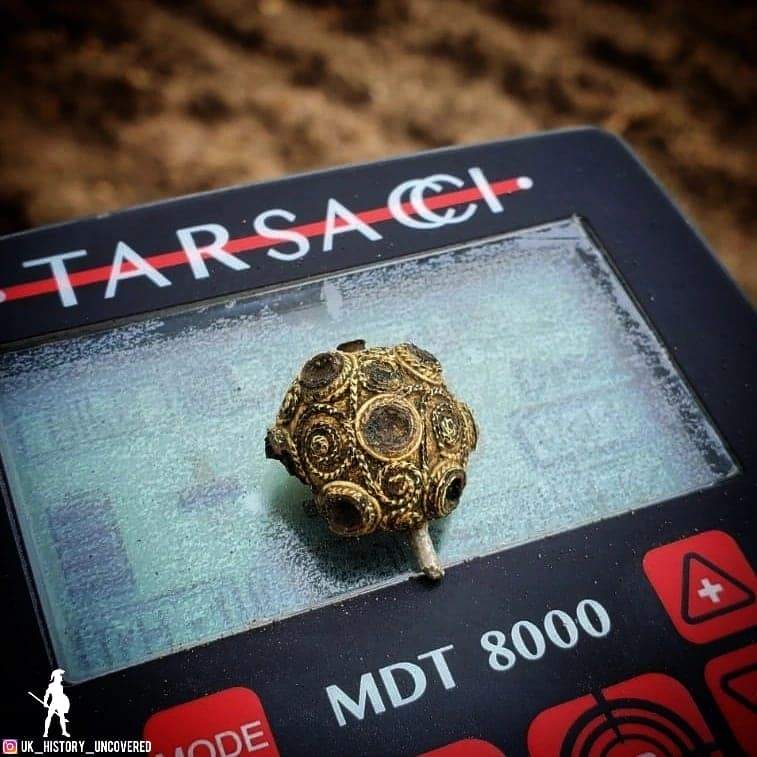
Different technology and completely different possibilities, but only in the right place is the advantage of the Tarsacci MDT 8000 detector that crushes the competition! You do not believe it? Marketing gibberish? Read foreign forums, especially from the USA… these are only the best opinions, but there are also disadvantages.
This equipment, like any other, requires some time and understanding, it is not a low-end, plug-and-forget model. It takes some time, but the results speak for themselves. There is one more little snag. Tarsacci MDT 8000 metal extractor in ordinary conditions, such as low soil mineralization or lack of coke, iron, and foil, will not show anything spectacular. Yes. You need a place full of iron, pottery, coke, slag, magnetic stones, and similar crap, and that’s where the real fun begins! I’m fucking stupid?! Does he probably want to sell…?! Nothing like that, a couple of weeks in the same place over and over again following my footsteps. In addition, various other competition equipment, change of operators, weather, and an area untouched by human hands for 40 years. Only mowed grass. Even changing the orientation of walking in your footsteps, digging on old holes – your holes (fenced area)!
Effect? Pulp! Shock and amazement. The results speak for themselves, competing detectors on various programs are 3 to 5 coins and Tarsacci?! Twice as much and always in the same place!
Recent searches and only this detector give advice. Space and departure at the same time! How is it possible that a silver coin can be heard from over 30 cm under the layer of iron, nails, and ceramics? Two other devices signal nothing but iron, or operate at the limit, although they are perfectly aligned, they have a clear problem. The probes begin to drift and iron wraps around the scale, pottery and stone beat in the middle. A spooky overture, no chance against the cacophony of machine gun sounds!
Hybrid technology allows you to see through this iron to some extent. Vulnerability to camouflage items is less. It’s not 100% known, but it’s still better than the latest top-shelf metal detectors. It makes a big difference and it really works!
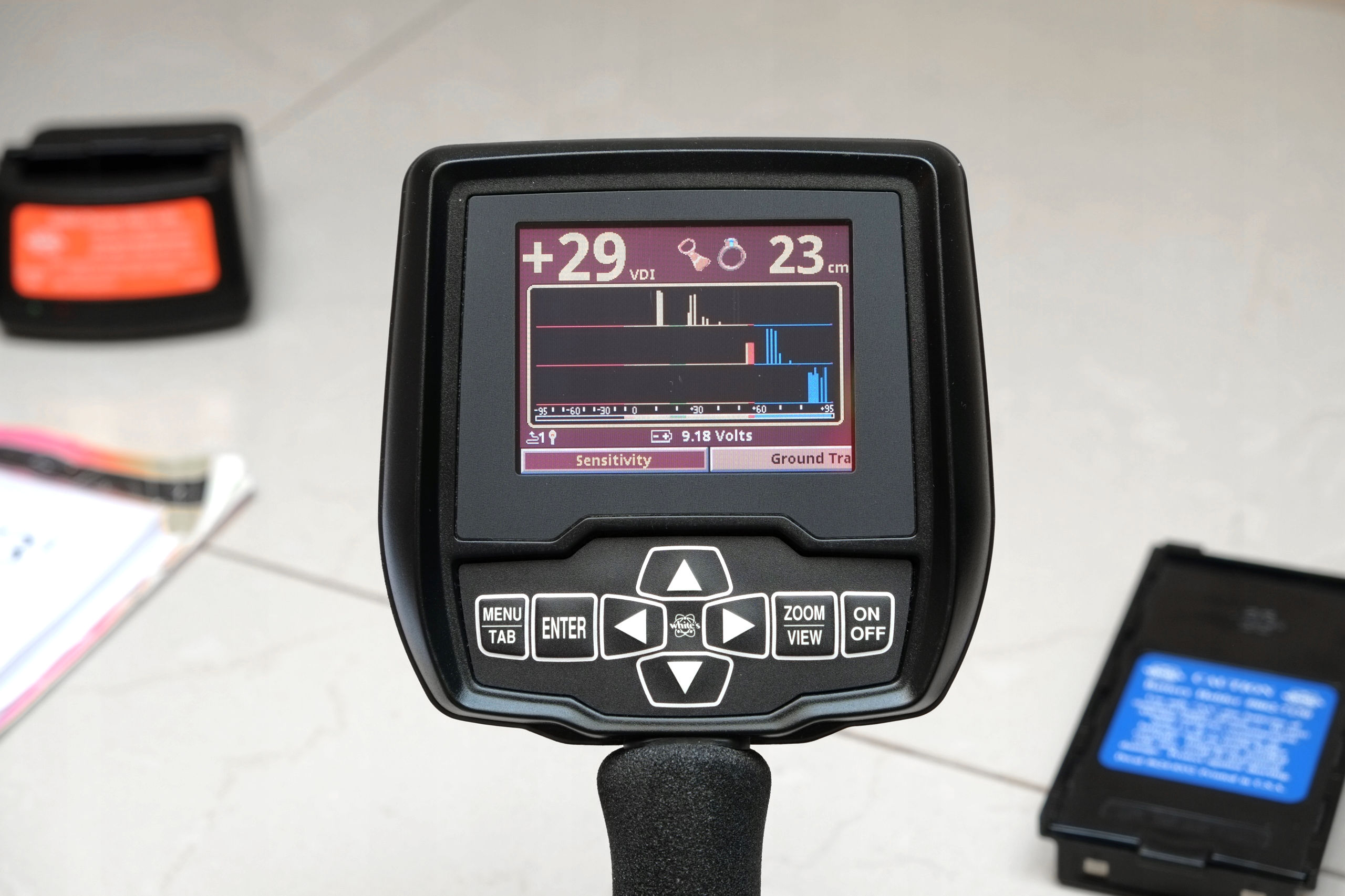
Whites Spectra is a unique metal detector. Complicated to use at first glance, but giving amazing configuration options. Why is it so special?
Firstly, it is a detector working in three frequencies at once, and secondly, it has a mixed mode, not like the RUTUS in the mono version, but a stereophonic one. What does it give? Both static and dynamic channels work simultaneously and are not switched between each other as happens in the mono version. We hear all the time about the multiplicity of depth and types of targets. It’s hard to miss items and we know what we have under the probe. This is a great comfort of work and if we add to it great identification, this device, despite its age and not very high speed of object separation, is still an unsurpassed model for many manufacturers.
There are also disadvantages, apart from the above-mentioned complication, the weight of the entire device and the color display are not very visible in direct sunlight. It is true that the Sharps LCD has great contrast and good backlighting, but it will not be at the level that black and white screens give.
Another problem is the power source. Factory batteries last literally for a while and are a pain to use and charge. Much better to switch to a pack of 18650 lithium-ion cells (3 pcs.) and an electronic charger. I use such a set myself and the working time is three times longer. I bought a basket for three such cells and designed and printed the housing.
The factory seat post is also not the most comfortable, but you can easily adjust something lighter.
The work itself and the ability to configure after each other give virtually unlimited possibilities. The initial learning about the equipment, it requires a lot of patience and perseverance as well as knowledge of the English language. Dedicating a few months to learning pays off in the field in the form of better identification, easier fastening on the target, and not tiring work. Fewer random sounds are also a big plus.
The ability to configure allows you to adapt to many scenarios and types of searched objects. The separation of software and hardware settings as well as filters allows you to configure the detector for yourself also in terms of audio or displayed ID and pictograms and ending with colors. This is something unheard of nowadays.
The V3i version allows you to use the XY plot option for additional item identification. We see as many as 3 frequencies in a graphic form, which allows you to better determine the conductivity and type of metal in some approximation. Even XP has used this in the XP DEUS I and DEUS II models.
The last thing is the depth indicator. Not as graphic as we know it now, but in cm and all the time in a dynamic mode without the need to track how it was done on other devices. In this simple way, we can distinguish what is surface garbage and what is a valuable item lying much deeper.
Bob Canaday, the late creator of the Whites Spectra, was undoubtedly a genius, and it’s a pity that none of the current metal detector companies have undertaken to continue his legacy.
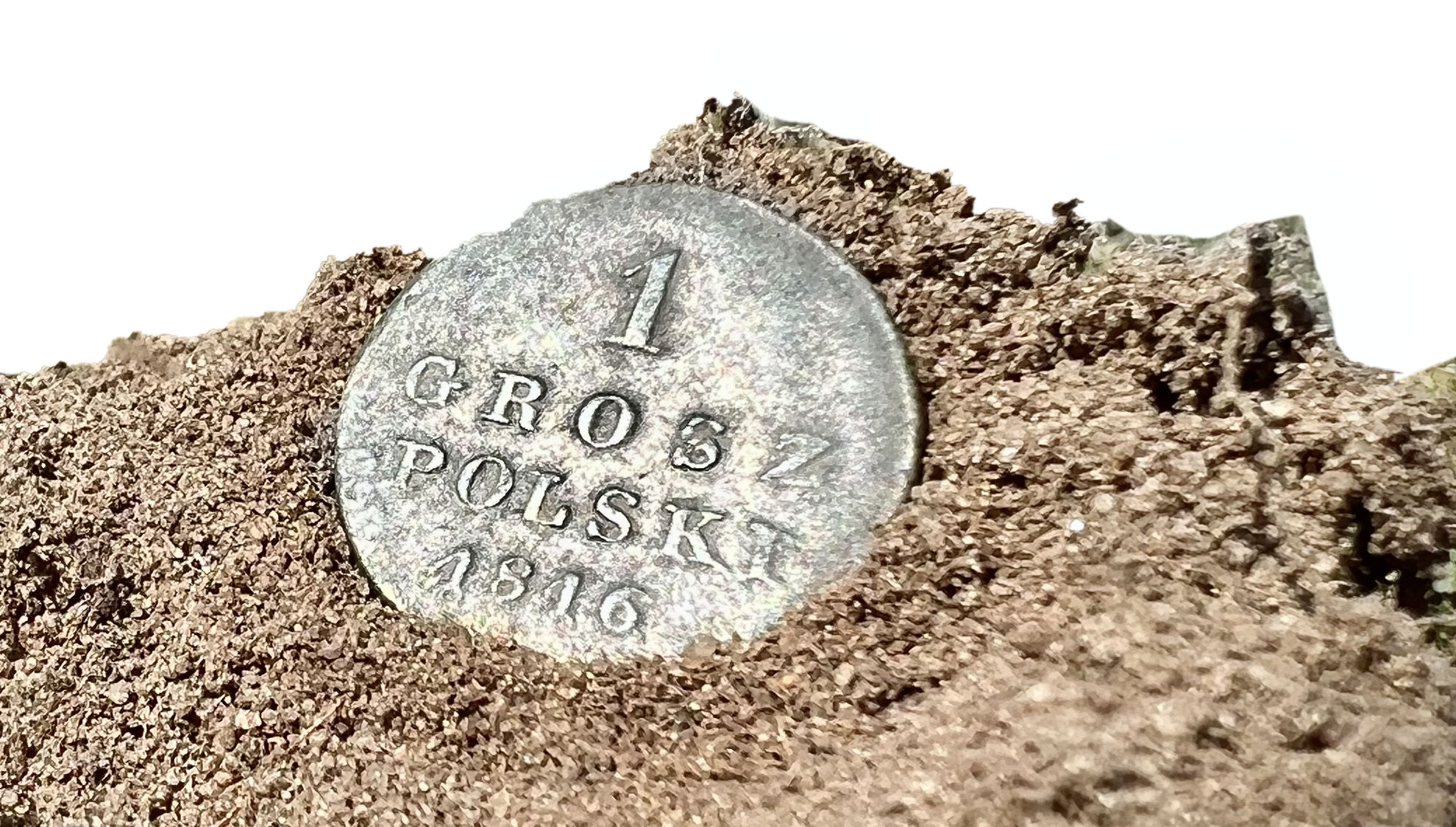
The weather always affects the effect of the search and there is no need to cheat. Rain and temperature change the behavior of devices. Sony tends to drift and to put it bluntly, they lose their properties. The result is a decrease in ranges and false signals and interference from the ground. I mean extreme summer temperatures because some manufacturers have been using compensation for the temperature influence on the work of the detector probe for some time.
So how do you defend yourself in such a situation? It’s best to reduce the sensitivity or try ground balance again, even manually for added confidence. There’s an old trick left… we raise the probe above the ground and don’t drive it low. Let’s say 5 cm – 10 cm is the absolute minimum. You may find it much quieter and more stable, and the targets lock in the ID scale better and don’t jump.
Detuning or changing the frequency can also be a solution in this situation. In the end, it remains to wait for the rain, just like mushrooms after rain, previously unheard or immeasurable objects begin to appear.
If you liked this article, please post it on social media and comment on this page.
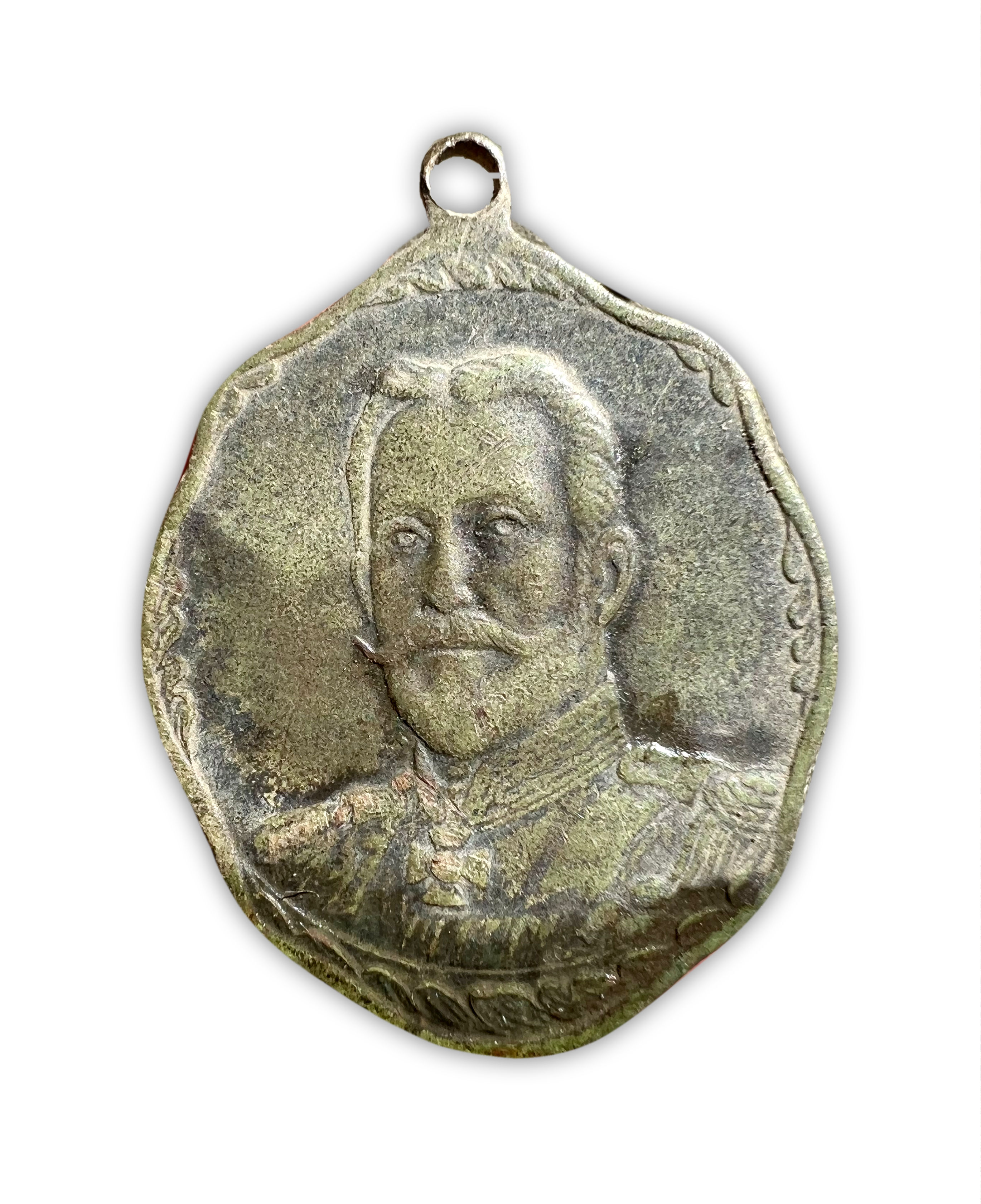
Many of us make a mistake at the very beginning and choose the wrong equipment. The detector should be adapted directly to the conditions that prevail at the workplace as well as expectations regarding the finds. Half the poverty when we are looking for ordinary places without a lot of iron or civilization garbage. In such places, ordinary simple equipment for a few hundred zlotys is enough.
The problem begins when the soil is highly mineralized and we have a high content of iron, ceramics, turf ores, and coke. It turns out that ordinary equipment does not work at all. Did not work. Half the trouble is when we are able to determine it organoleptically and it can be seen from the behavior of the detector. The device energizes, the depth of detection decreases, the ID signaling simply does not work, and the excess iron causes the device to clog and shift in the scale of rusty corrosion to the range of high conductors such as silver. swept away. You can hang the equipment on a peg. There is no topic.
Fortunately, there are several ways to avoid problems. It is known that it is best to buy a high-end detector such as Tarsacci MDT 8000 or XP DEUS II … but who can afford such extravagance nowadays?
We start from scratch. If our equipment has the All Metal mode, we start it immediately. Discrimination is the enemy of every Seeker. End and period. In this way, we improve the performance and the electronics have fewer signals to filter, it is faster and there is less chance that we will miss something. We also start to sweep slower and more accurately. Surveying is fundamental. We assume every move and absolutely parallel to the ground.
Too much interference and false signals? We detune and reduce the sensitivity. It is also worth raising the probe a little higher. Sometimes it helps, also in the case of searching for signals on the surface – a lost wedding ring.
App. Yes, application. I send furious Janusz with the police syndrome to hell. The application is not a record of the services, but a help for you. What? Simple, we see how much we’ve walked and what signals were shown in a given place. You can observe the concentration of finds. You don’t have to upload photos, just a letter marker of the item. On this basis, it is known where to return with other equipment and or improve with the help of the selected program or a new set of settings.
Ground calibration. Just as important as detuning from EMI interference. The basis, the essence of working with the detector. Done right is a chance for success, screwed up is time wasted. Firstly, we look for a clean place, secondly, we double-check. When calibrating, we look at the values, compare, go to another place and try again. Correct identification and depth of detection depend on it. The measurement value tells us what conditions we can face.
Mineralization index. Not every metal detector has it. We check what it shows, and on this basis we are able to predict how much we will lose performance in this place and how to set the equipment exactly.
In the end, there’s always a fat wallet. Does the place produce? Are there results? It’s worth investing in better equipment! Multi-frequency device or in t hybrid technology, pulsed? Why not! Such solutions allow you to break through the iron layer in a more effective way. Equipment doesn’t have to cost a fortune. All the time on the market we will find garage producers who can work wonders. Currently, PI impulse detectors have discrimination and identification, it does not work as well as in popular VLF devices, but it allows you to reopen old places that apparently do not produce anything new!
No one would have believed a few years ago that the so-called. the frames will be in a version with full discrimination and in IB technology. Looking for a big color? No problem, a good example is Pathfinder Nexus, described in one of the articles of this blog.
If you liked this article, give it a like and remember our social media:
Youtube
Sklep Omnitron
Omnitron Metal Detecting Group
Intagram
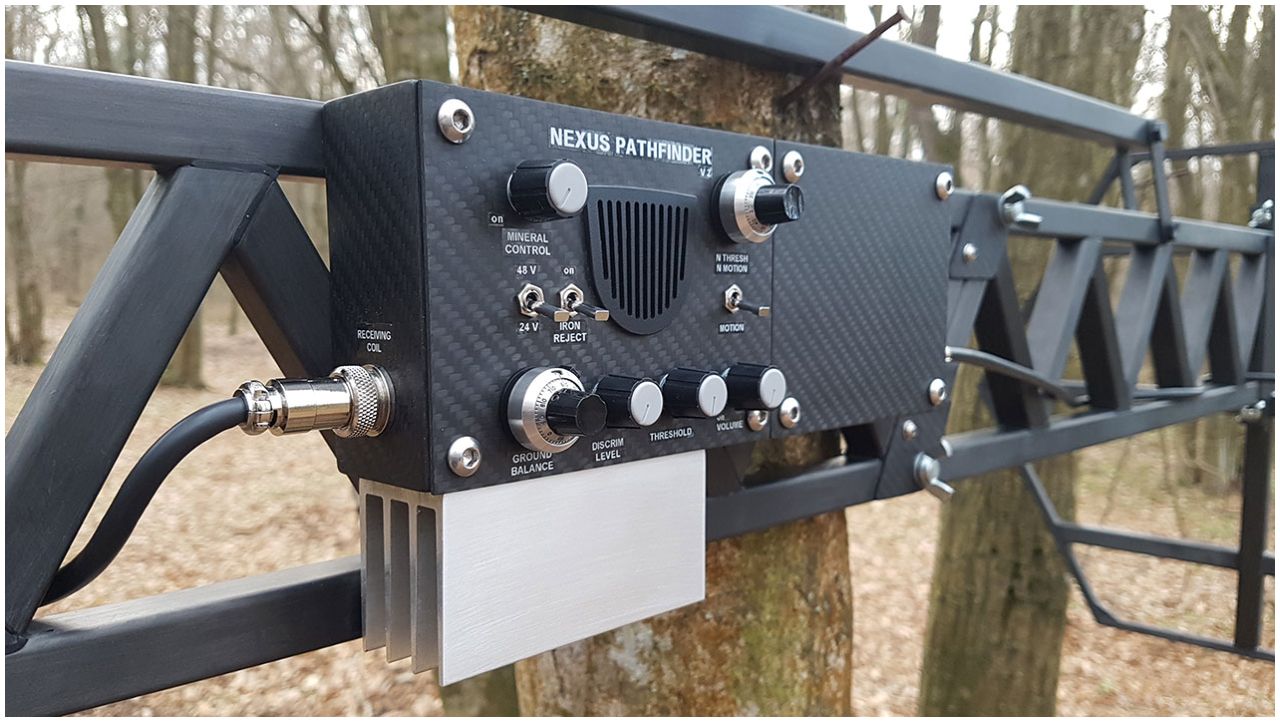
The frame detector or the popularly known frame is a really great solution for the big game, but unfortunately also very demanding when it comes to the application itself. Everything has to be carefully thought out because the choice is wide and the possibilities are practically unlimited.
The NEXUS company needs no introduction. This is the world of analog detectors, unreasonably expensive, complicated, and IB technology.
So what is the difference between NEXUS products and others, apart from the quality of workmanship? In addition to performance, this type of two-box allows for quick movement over rough terrain and can only be operated by one person. It has discrimination and we are free to choose the type of guide we are looking for! Color or iron and smooth adjustment. Story!

Brilliant solution, considering that with a probe size of 20 inches, we see objects the size of soda cans and larger! There is no problem with small garbage that can make life unbearably difficult. To this, we will add a choice of operating modes: static and dynamic, ground calibration, and mineralization compensation. The extreme amount of iron is not a hindrance, and the device is made of aluminum and carbon fiber and can be quickly folded. The weight is about 4.5 kg, quite bearable.
Finally, the speed of work and we have a really nice daemon that is handy and easy to use. What is the voltage on the probes, I’m afraid to ask, and the large heat sink below the control panel is impressive. Below is a table presenting the capabilities of the Nexus Pathfinder V2.
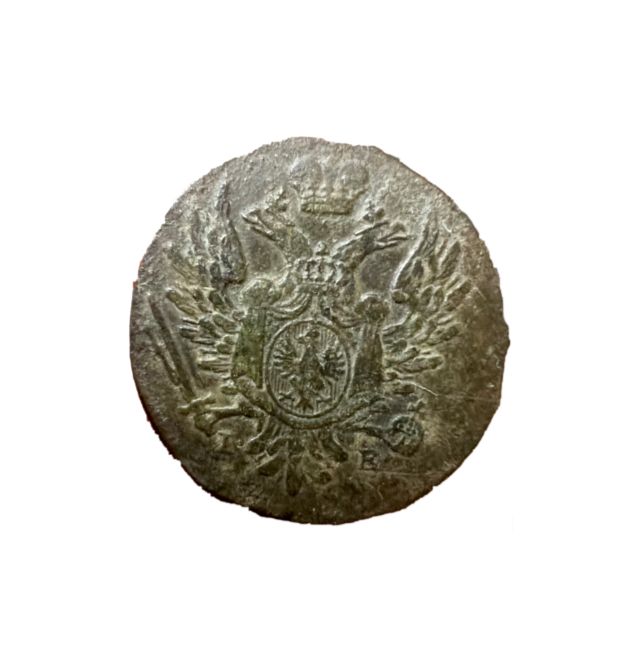
XP in the new DEUS II metal detector model implemented the old model in the form of the DEUS MONO program. Less clever people will tell me why I have a set of programs working in several frequencies at once, i.e. more stable, more resistant to worse conditions, and better signaling different conductors from both ends of the scale (silver and gold = wealth). So why single frequencies?!
The reason is simple, the device needs less time to process the data of only one frequency, and a well-chosen one can make it possible to reach a little deeper. The lowest frequency is 4 kHz and the highest is 40 kHz. Each of them has its advantages and disadvantages. Low is really deep and favors high conductors such as silver and large pieces of iron, high will better cope with heavy debris and high mineralization with fine and low conductors such as gold and small silver coins.
We sacrifice stability and try to squeeze everything we can out of the detector. Below is the OMMONO program especially for you:
The XY chart will help you identify:
Options/Configuration/Profile/XY
Menu:
Calibrate to the ground in a clean place, check the values in another, here manual ground calibration by the so-called. pumping or choosing a value is essential.
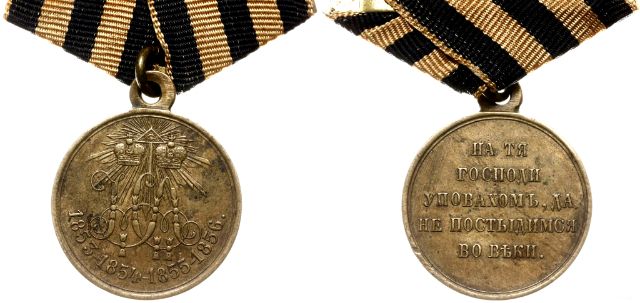
The RELIC program in the new XP DEUS II detector is a kind of Holy Grail because it works on a completely different principle than other programs. It is closer to the Gold Field version, which is a typical program for searching for gold nuggets, also known as the ORX model. The multi-frequency characteristics do the job, especially in iron. The frequency oscillates around 24 kHz, which is optimal even on the more difficult ground and there is no great loss of depth.
IAR discrimination works by size rejection of the iron signal, but you can read about it elsewhere on my blog or watch a video on my Youtube channel. I recommend the XP DEUS II playlist for dummies!

So how do you properly set up the RELIC program to go really deep? We know it’s the deepest program next to DEEP HC, but how to squeeze more out of it? In the beginning, you choose the REACTIVITY responsible for the separation of objects. For me, the starting point is 1.5. For more cluttered places, I recommend 2 or even 3. A higher value means less performance when it comes to depth, but better separate objects. Here you have to adjust everything to the place and quantity – the intensity of the signals. Along the way, we set the sensitivity to the level of stable operation, we scan the channels so that the device automatically selects the most stable operating range.
The volume of the iron, the lead signal is already a personal preference, as is the amplification of weak signals. It is worth leaving the factory settings as the default. The leading signal THRESHOLD we need to raise a bit (software version 0.71).
We come to the most important thing – IAR discrimination. Here I set a maximum value of 3 to avoid losing low and fine gold guides, above this value, we risk more. A higher parameter gives less low signals and guarantees more stable operation. By entering the EXPERT tab, we can set NOTCH. In this case, it is a kind of audio discrimination that does not affect the performance of the detector, but unfortunately, very deep signals can give a value of 00 on the display. Fortunately, we will only lose the audio and the values are still displayed. It is important because 00 is a value close to the reading of the soil and also ceramics, which is a testimony of human presence in a given area.
You can always use NOTCH, it increases the comfort of work and translates into results. If the signals are bothering you, you can try to set the range from 00-06. You will not be overloaded with signals from rusty iron and over-response of the soil. There is always a risk of losing items masked next to this value, deep without ID as I wrote above. It is worth choosing settings for a given scenario or a search strategy you have developed in a given place.
Below is the OMNITRON program especially for you!
Remember to subscribe and get discounts (click):
Youtube
Sklep Omnitron
Omnitron Metal Detecting Group
Intagram
Program OMRELIC:
The XY chart will help you identify:
Options/Configuration/Profile/XY
Menu:
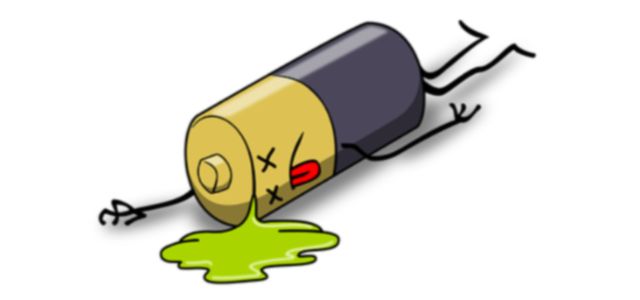
Nowadays, detectors have integrated batteries, is it good or bad, and how to care for this type of solution? Find out in the article below.
Modern power sources are already mostly integrated into the device. Field exchange is not possible. For some, it’s a disadvantage, because you have to remember to charge before going out, on the other hand, going for replaceable batteries in the middle of nowhere can often be completely futile, and we don’t always remember to take or check spare ones. The disadvantage can also be the number of charging devices. Such XP DEUS has a link in the probe, wireless headphones, and in the RC control panel … it’s a lot, although there is always an alternative, if the headphones are discharged, we have a panel and a loudspeaker, if vice versa, only headphones, and limited settings options.
You can always take a power bank with you or recharge it in the car, but it also takes time. Both solutions have some disadvantages, but what about the durability of such internal batteries? This is where electronics come in handy. Internal circuits manage the charging cycle. The service life is several hundred or more cycles, so it will be enough for some time, and the manufacturer provides for replacement, which can be done on your own or commissioned to the service.
How to charge? As I mentioned above, everything is managed by electronics, and the power of the charger affects only the time of the process itself. The USB standard reigns, so the matter is simple, we are looking for a connector or a charger. For your own safety, it is worth taking care of a good quality solution. YouTube is full of videos of spectacular fires of cheap USB chargers!
The detectors have charging indicators and the process itself takes a few hours, but what is the best way to check if the detector is charged when there is no such indicator or it does not work properly? In a very simple way. We touch the charger. Cold means the process is finished, warm means that we have to wait a little longer.
How often should we charge our detector? After every exit? Always connected? How to store?! The principle is simple. We discharge to 20% not to the end, so as not to burden the cell thermally, overheating drastically shortens its life. Charge to 80-100% capacity. During storage, the battery should not be more than 80% and less than 20%. It’s always worth checking. We will avoid problems in the future.
The replacement itself is not complicated for most solutions, although there are some that require a few gymnastics. For example, XP has a battery built inside the probe, which brings the problem of cutting the resin and refilling it after changing it. Fortunately, there are kits with instructions and there is nothing to worry about if we have a minimum of motor skills.
At the very end, the type of removable batteries. It’s not an easy topic. The market is full of substitutes. The simple rule is only branded and from proven sellers. Cheap cells do not work or only work for a while and fail at the worst possible moment. It is also important to check whether the device will work well with the batteries. They have a slightly lower operating voltage (they last for a shorter time than alkaline ones) and the electronics can play tricks on us, incorrectly signaling the moment of discharge. Strange behavior, and lack of stability of work and ranges are also not uncommon in such a situation. It is worth checking in the documentation attached to the detector what can and cannot be done.
If you liked this article, please share it on social media and comment below.
